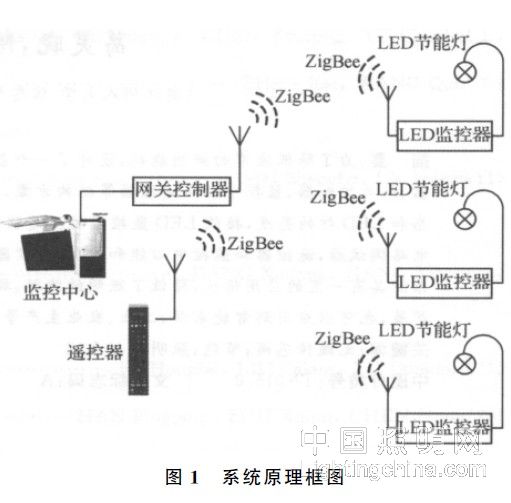Introduction
With the development of China's economic construction and the acceleration of urbanization, urban lighting has been greatly developed, and the energy demand and consumption in urban lighting development are also increasing. During the 10th Five-Year Plan period, the Ministry of Construction vigorously promoted the urban lighting industry. Green lighting projects have achieved significant economic and social benefits. [1] However, from a general perspective, urban green lighting work has just started, development is uneven, there are still many problems and weak links, such as urban lighting. The supporting system is still not perfect, the market supervision system is still not sound enough, and problems such as low efficiency, high energy consumption and light pollution are still prominent. The awareness of saving electricity and protecting the environment needs to be further strengthened. In November 2004, the National Development and Reform Commission issued China. The first “medium- and long-term special plan for energy conservationâ€, in which “green lighting project†was listed as a key project. [2] In 2006, the National Development and Reform Commission listed green lighting engineering as one of the ten key projects of the “Eleventh Five-Year Planâ€. In July, the Ministry of Construction formulated the “Outline of the “Eleventh Five-Year Plan†for Urban Green Lighting Projectsâ€. The outline clarifies the “high efficiency and festival of urban lightingâ€.
The current LED light source is the hope of the 21st century light source market. LED lights have energy saving, longevity, environmental protection, impact resistance, strong lightning resistance, no ultraviolet (UV) and infrared (IR) radiation, low temperature operation, high speed The advantages of work, safety and reliability. Many advantages indicate that it will gradually replace traditional light sources in the future. As long as the cost of LED lights decreases with the continuous advancement of technology, LED bulbs will replace energy-saving lamps and incandescent lamps. Now the country is paying more and more attention to lighting energy conservation and Environmental protection issues have been vigorously promoted the use of LED bulbs. In the LED lighting control, there are two main methods: wired and wireless. In the wired mode, each monitor must be connected to the control center by wire, and its integrated wiring engineering Large amount, high cost, and comprehensive wiring of existing monitors still have problems such as damaged appearance; wireless methods mainly include WLAN, CDMA/GSM, but there are also problems such as inflexible networking and high running cost. Therefore, How to provide a more perfect solution for LED lighting control system, become a key issue of LED lighting control system. [3-4]
With the development of wireless sensor networks, large-scale low-power, low-cost and multi-function micro wireless sensors have formed a wireless sensor network through cooperation, data collection, processing and unique wireless communication means [5] Thus, a new information acquisition and processing mode is created, which provides a new means for LED lighting control system. Therefore, a wireless sensor network-based LED lighting control system is proposed. The system relies on wireless networking, no wiring, and flexible expansion. It does not occupy space, is easy to be adopted, and has the characteristics of quick and convenient implementation. It can reduce the energy consumption of urban lighting, improve energy utilization efficiency, reduce energy consumption, and save energy costs. It has a large market application prospect.
1 system design thinking
The system is mainly composed of LED monitor, gateway controller, remote control and monitoring center (see Figure 1). LED monitor mainly completes the functions of controlling LED light switch, reporting switch status, LED light dimming, etc. The gateway controller sends All LED light control signals in the network, receiving feedback data, etc. It is responsible for monitoring the operation of the LED monitor in the network, issuing the command of the monitoring center to the LED monitor, and feeding the LED monitor and line information to the monitoring center. The gateway monitor In the middle of the monitoring center and the LED monitors in each gateway, it can communicate with the monitoring center through 485 and RS232 modes; the ZigBee communication protocol can communicate with each LED monitor without communication costs. The monitoring center mainly realizes Remote data access and monitoring of LED monitors, including parameter configuration, monitoring command transmission, LED status collection, etc. It is also possible to set the LED switching control strategy according to the changes of road segment sunshine and passenger traffic, under the premise of meeting basic lighting. Energy saving. The remote control is actually a hand-held host computer. The function is similar to the monitoring center. It controls the LED lights of each node. The brightness is received, and the relevant feedback data is received. After the judgment is correct, the corresponding information is displayed on the liquid crystal screen, otherwise the data packet is discarded.
